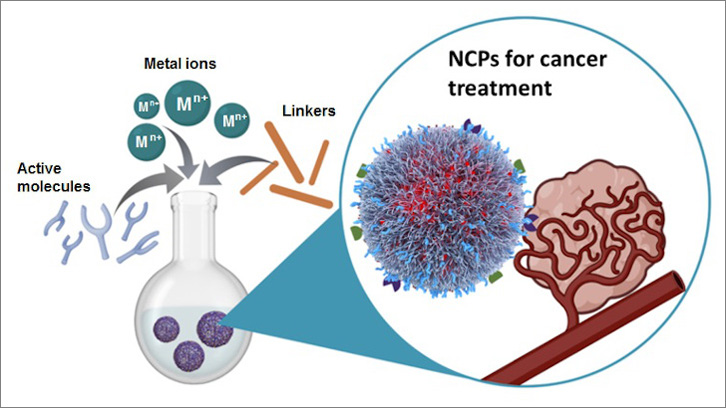Coordination polymer nanoparticles (NCPs) for treating cancer

Researchers from the UAB in collaboration with researchers from the Institut Catalá de Nanociència i Nanotecnologia (ICN2), coordinated by UAB researcher Fernando Novio, have published an extensive review focus on the use of coordination polymer nanoparticles (NCPs) to treat cancer. In that way, an exhaustive compilation of reported systems is classified depending on the antitumoural activity employed: encapsulation of drugs, stimuli-sensitive response, metal chemotherapy, photodynamic therapy and theranostics, among others.
Coordination polymer nanoparticles have fascinated researchers over the last years. Their intrinsic theranostic properties, the ability to encapsulate several drugs/biomolecules and the surface functionalisation for increasing their biocompatibility and targeting properties, have remarkably impacted in prospective drug delivery alternatives in medicine. The number of examples published has grown exponentially over the last years. Specifically, significant advances in cancer treatment have been reported. NCPs have accomplished a high efficiency in cancer therapy and diagnosis (i.e., drug delivery carriers and bioimaging probes).
In this new publication in Coordination Chemistry Reviews journal entitled “Antitumour activity of coordination polymer nanoparticles”. The UAB researcher Dr. Fernando Novio, as “corresponding author” and a group of researchers from UAB (Rubén Solórzano, Dr. Félix Busqué, Dr. Ramon Alibés) and from ICN2 (Dr. Salvio Suárez, Daniel Ruiz-Molina) have summarised different aspects related to the synthesis and characterization of NCPs, their antitumoural activity, their theranostic properties, and the therapeutic activity of most important examples described in bibliography until now. This work include a critical discussion regarding challenges and future steps needed in the area is presented to encourage researchers to overcome and fill the gap between the laboratories and the clinics.
In this review, the authors emphasize the advantages of NCPs for cancer treatment. The most representative examples of NCPs for antitumoural applications are described grouped into six mean representative areas: i) encapsulation approaches, ii) stimuli-responsive NCPs, iii) metal chemotherapy, iv) photodynamic therapy (PDT), v) unconventional therapeutic approaches and vi) theranostics.
This article includes an interesting discussion concerning the encapsulation/release properties of these particles and their interaction with biological environments, highlighting any limitation and challenges that these systems are facing from a clinical translation perspective and envisioning possible future trends.
The review has been published in Open Access, thus allowing for free access to all interested researchers.
References
S. Suárez-García, R. Solórzano, R. Alibés, F. Busqué, F. Novio, D. Ruiz-Molina (2021) Antitumour activity of coordination polymer nanoparticles. Coordination Chemistry Reviews, 441, 213977 https://doi.org/10.1016/j.ccr.2021.213977


